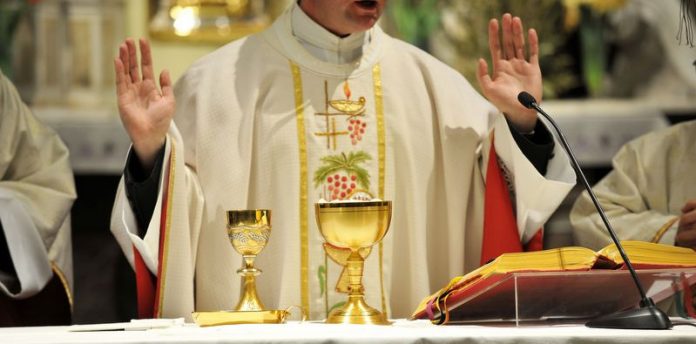
Bridging the gap between head and heart
JARED DEES
We have a two-part responsibility as catechists: We must educate the mind, but we must also inspire the heart. When it comes to the Mass, we want to make sure our students understand what each prayer and action means. We also want to make sure each prayer and part has a personal heartfelt meaning to them.
The key to bridging the gap between the head and the heart is what we call meditation. Meditation, in the Christian sense, is the way we make personal connections to what we believe. We ask ourselves what God is saying to us personally through the experience of an encounter with him in the sacraments, in Scripture, and in the many other ways, we meet him. Through meditation, we appeal to the Holy Spirit to help us find an intimate encounter with Christ.
The more meaningful the Mass is both intellectually and emotionally, the more we can hope our students actually enjoy coming to church and bringing their families to the Sunday liturgy.
There are many great opportunities for meditation before and after the Mass. Here are a few that you might try in class.
PENITENTIAL ACT
Spend some time before Mass going through a brief examination of conscience with the students. You can use a traditional format such as the ones they might use to prepare for confession, or you can use the words of the Penitential Act itself as a guide. Ask your students to reflect on any sins in their thoughts or words, in what they have done or what they have failed to do. Remind them to think of these sins during the Penitential Act with the assurance that God grants his forgiveness to them during Mass. (You may want to point out, however, that only through the sacrament of Penance can they find forgiveness for mortal sin.)
LITURGY OF THE WORD
Read the Sunday readings with the students. Take them through a short process of lectio divina. I like to use Pope Benedict XVI’s five questions in his apostolic exhortation, Verbum Domini, as a guide:
■ Read: What did I hear?
■ Meditate: What does it mean to me?
■ Pray: What can I say to the Lord in response?
■ Contemplate: What conversion is the Lord asking of me?
■ Action: How can I make my life a gift for others?
LITURGY OF THE EUCHARIST
There are so many prayers and actions we could meditate upon during the Eucharistic Prayer, but none are more significant than the words of consecration. Ask your students to imagine themselves at the Last Supper, listening to Jesus say, “This is my body, which will be given up for you,” and “This is the chalice of my blood … which will be poured out for you and for many for the forgiveness of sins.” What might they say and do in response to these words?
THE DISMISSAL
At the end of the concluding rites, the priest or deacon says to us, “Go in peace … ” Have the students think about who they are sent to serve after Mass. With whom can they share what God has told them during Mass? Secondly, where do they need his peace most right now? In what parts of their lives do they need peace as they go through the week until the next Mass?
These are only a few examples. You could, of course, focus on the many individual parts and prayers of the Mass: the Gloria, Invitation to Prayer, the Sanctus, the Mystery of Faith, the Sign of Peace, and so on. Using these examples as a guide, you can come up with your own meditations to help students make personal connections to what they pray and do.
If you are successful in helping them bridge that gap within their hearts, you open up the
possibility for them to have a true encounter with Christ at Mass — an encounter that can bring them closer into a lifelong relationship with God.
Jared Dees is the author of Christ in the Classroom: Lesson Planning for the Heart and Mind and the founder of TheReligionTeacher.com, which offers many resources for meditating on the Mass.
This article was originally published in Catechist magazine, November/December 2018
PHOTO: PEACEPIX/SHUTTERSTOCK




